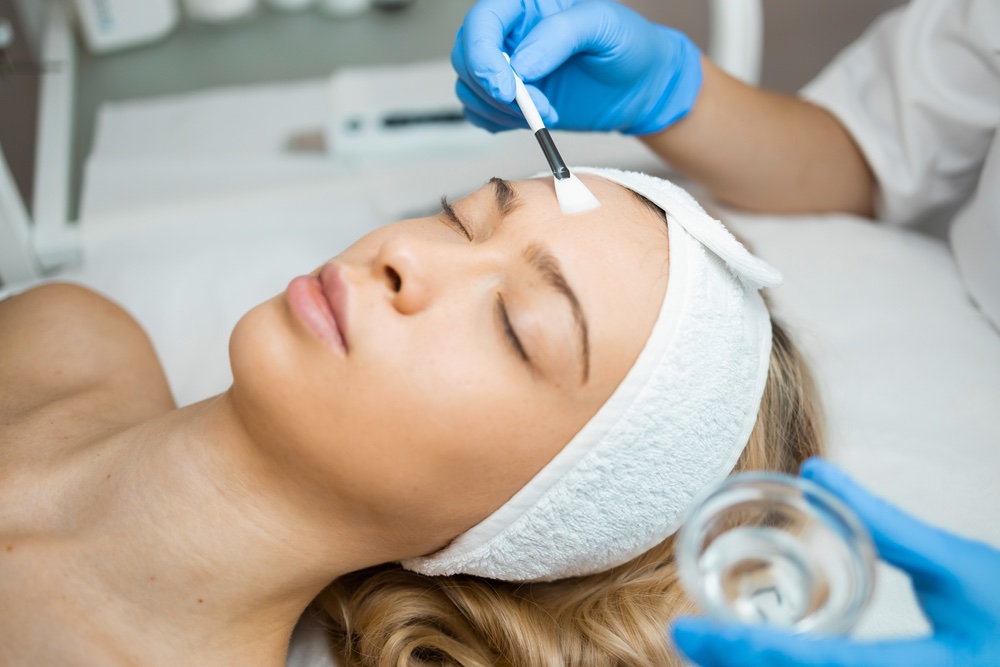Chemical Peels: Everything You Need to Know

Have you ever wondered how some people manage to keep their skin looking so fresh and radiant? One secret that’s been making waves in the beauty world is chemical peels. Whether you’ve heard of them before or this is your first time, we’re here to break down everything you need to know about this popular skincare treatment.
What are Chemical Peels?
Chemical peels are a type of skin treatment used to improve the appearance of the skin on your face, neck, or hands. They involve applying a chemical solution to the skin, which causes it to exfoliate and eventually peel off. The new, regenerated skin is usually smoother and less wrinkled than the old skin.
How Do Chemical Peels Work?
Imagine your skin is like an onion with many layers. Chemical peels work by removing the top layers, revealing the fresher, younger-looking skin underneath. This process helps reduce fine lines, wrinkles, and other skin imperfections. The depth of the peel and the type of chemicals used will determine how deep into the skin the treatment goes.
Types of Chemical Peels
Superficial Peels
These are the mildest types of chemical peels and only penetrate the outer layer of the skin. They are great for improving the appearance of mild skin discoloration and rough skin. They often use mild acids like alpha-hydroxy acid.
Medium Peels
Medium peels penetrate the outer and middle layers of skin to remove damaged skin cells. They effectively improve age spots, fine lines, freckles, and moderate skin discoloration. Glycolic or trichloroacetic acid is often used in these peels.
Deep Peels
These peels penetrate the middle layer of the skin to remove damaged skin cells. They are used to treat deeper wrinkles, sun damage, or scars. Deep peels often use stronger acids like phenol and can have a more significant recovery time.
Benefits of Chemical Peels
Why do people opt for chemical peels? Here are some of the key benefits:
- Improved Skin Texture: Chemical peels can make your skin smoother and softer.
- Reduced Fine Lines and Wrinkles: They can help diminish the appearance of fine lines and wrinkles.
- Even Skin Tone: Peels can help reduce hyperpigmentation and age spots.
- Acne Treatment: Chemical peels can reduce acne and improve the appearance of acne scars.
- Boosted Confidence: With enhanced skin appearance, you may feel more confident.
Who Should Consider a Chemical Peel?
Chemical peels are suitable for many people, but they aren’t for everyone. You might consider a chemical peel if you have:
- Sun-damaged skin
- Fine lines and wrinkles
- Uneven skin tone or texture
- Acne scars
- Age spots or freckles
However, if you have a darker skin tone, you should consult with a dermatologist to ensure the treatment is right for you, as deeper peels can cause uneven skin tone in some cases.
Preparing for a Chemical Peel
Before getting a chemical peel, it’s essential to prepare your skin. Here are some steps you might need to take:
- Consult a Professional: Always have a consultation with a dermatologist or skincare professional.
- Stop Certain Medications: You may need to stop using certain medications or skin care products before your peel.
- Sun Protection: Avoid excessive sun exposure and use sunscreen regularly.
- Skin Care Routine: Follow any specific skincare routines recommended by your professional.
What to Expect During a Chemical Peel
During the procedure, you can expect the following:
- Cleansing: Your skin will be thoroughly cleansed.
- Application: The chemical solution will be applied to your skin.
- Sensation: You might feel a tingling, burning, or stinging sensation as the solution works.
- Neutralization: After a certain period, the solution will be neutralized and removed.
The entire process can take anywhere from 30 minutes to an hour, depending on the type of peel.
Aftercare and Recovery
Proper aftercare is crucial to ensure the best results from your chemical peel:
- Moisturize: Keep your skin well-moisturized.
- Avoid Sun Exposure: Protect your skin from the sun to prevent damage.
- No Picking: Do not pick or peel off the skin as it heals.
- Follow Instructions: Adhere to any specific aftercare instructions provided by your professional.
Recovery times can vary. Superficial peels might require only a few days, while deeper peels could take a few weeks.
Potential Side Effects and Risks
While chemical peels are generally safe, there are potential side effects and risks to be aware of:
- Redness and Swelling: Temporary redness and swelling are common.
- Peeling and Flaking: Your skin will peel and flake as it heals.
- Changes in Skin Color: Some people may experience changes in skin color.
- Infection: Though rare, there is a risk of infection.
- Scarring: There’s a small risk of scarring, particularly with deeper peels.
Always discuss potential risks with your provider before undergoing a peel.
Chemical peels can be a fantastic way to rejuvenate your skin and address various skin concerns. Whether you’re looking to reduce wrinkles, even out your skin tone, or treat acne scars, there’s likely a peel that’s right for you. Always consult with a professional to find the best treatment for your skin type and condition.
